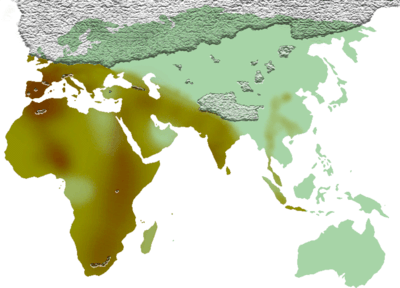Ficron
.png)
A ficron handaxe is the name given to a type of prehistoric stone tool biface with long, curved sides and a pointed, well-made tip. They are found in Lower Palaeolithic,[1] Middle Palaeolithic and Acheulean contexts, and are some of the oldest tools ever created by man.[2] The tool was named by the French archaeologist François Bordes.[3]
Like other types of handaxes, ficrons are created through a process called flint-knapping or lithic reduction. This involves a process of percussing the stone with a hard hammer such as a stone, a soft hammer such as a bone or antler, and pressure flaking using a punch made of bone or antler.
Unsurprisingly, Acheulean tools such as ficrons can be found in the rift valley of Kenya,[4] and sites such as Gona and Bouri in Ethiopia, where early humans and others evolved. As these groups found their way out of Africa, the tools went with them.

However, Great Britain has also yielded its share of ficrons, found in gravel pits. Swanscombe Heritage Park is famous for its many archaeological discoveries, including ficrons. Because Britain was often covered in ice during the Paleolithic Age, it was only inhabitable between glacial periods. As glaciers melted, tools were swept into gravels where they are discovered today.[5]
References
- ↑ "Handaxe." Portable Antiquities Scheme. Updated 5/24/13. Accessed 11/15/13.
- ↑ K. Kris Hirst. "World's Oldest Acheulean Handaxe - And What it Might Mean." About.com Archaeology. Published 7/2/11. Accessed 11/15/13.
- ↑ Darvill, T (ed.) (2003). Oxford Concise Dictionary of Archaeology, Oxford: Oxford University Press. ISBN 0-19-280005-1.
- ↑ K. Kris Hirst. "Lower Paleolithic (Early Stone Age)." About.com Archaeology. Accessed 11/15/13.
- ↑ Richard Milton. "Palaeolithic Stone Tools." Museum of the stone Age. Updated 6/28/13. Accessed 11/15/13.